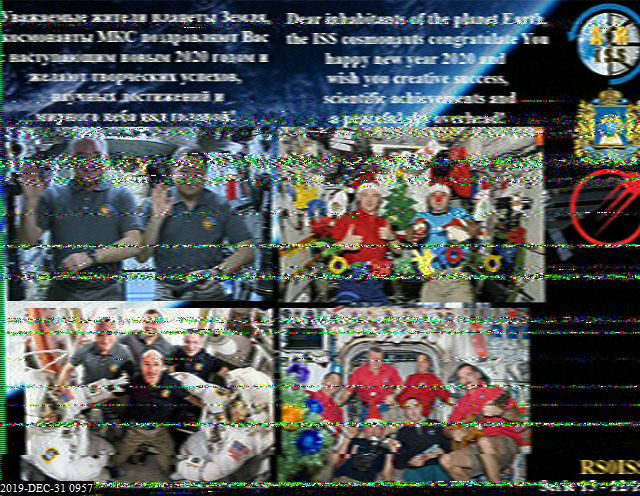Images From Space: Alexi Leonov Event (updated)
Last evening, I heard a fellow in Kennebunk asking for a radio signal check. He and his 11 year-old son had built a tapemeasure yagi for their handheld, to pick up an early morning SSTV transmission (slow-scan TV images) from the International Space Station. This prompted me to look up the event and leave my radio and laptop on overnight, knowing I wouldn’t be up in time for the pass. The sighting predictions can be looked up at https://spotthestation.nasa.gov/sightings/ . Zoom in on the map to find a location nearby, my closest was Alfred.
The event it turns out is to honor a Russian Cosmonaut, and the images commemorate his contributions:
ARISS will be supporting SSTV transmissions worldwide in memory of cosmonaut Alexei Leonov. Event runs from Dec 28 (11:00 UTC is the setup time) until Jan 1, 2020 (18:20 UTC when the system is scheduled for shutdown). Transmissions should be on the standard frequency of 145.800 MHz and in the PD 120 format.
http://ariss-sstv.blogspot.com/2019/12/sstv-from-december-28-2019-until.html
I loaded up MMSSTV and did some tests to from my phone running the Robot36 and SSTV Encoder apps with my laptop on a simplex frequency running on low power so as not to bother anyone. My images came in slanted, with green triangles on either side of the image. It took a little searching, but I found that the software can compensate for the slant and that this is caused by a difference in my computer’s clock versus the transmitter’s.
Then, tuned the radio to my ISS channel (frequency 145.800 MHz) and turned the volume down. Thankfully, the volume knob has no effect on the data jack in the back of my Yaesu FT-7800R radio. Another option, if the reader doesn’t have a data jack, is to simply connect a dual-ended headphone or speaker cable between the headphone jack of the radio to the mic jack of their phone/tablet/computer.
Here’s what I woke up to each morning!











UPDATE: December 31st indeed provided a better opportunity for some more and some clearer pictures. The “spot the station” page referenced above showed 2 passes, one at 15 and another 21 degrees; and the 21 degree pass lasted significantly longer.
UPDATE: January 1st was the last pass for this event, and added another 4 images. The gallery above has been updated with the best copies of photos received over the last few days.

